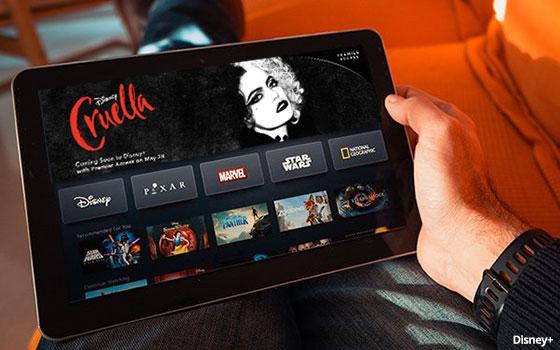Is Social Media Making Us Nuts? Most Americans Think So
- by Colin Kirkland , November 12, 2021

It has become a big question lately: Are social media platforms negatively affecting users’ mental health? And if so, how and to what degree? Now, a new study conducted by an online therapy directory service finds a majority of Americans -- 58% -- say they have experienced negative mental health effects from using social media.
The study from OnlineTherapy.com, which is based on a survey of 1,250 U.S. adults conducted via Pollfish on October 7, found only 25% said their mental health has not been negatively affected, while 10% said they were unsure and 7% said they don’t use social media at all.
The findings follow numerous recent reports about social media’s harmful effects, including documents leaked by former Facebook Product Manager Frances Haugen, who in September showed Facebook’s attempts at hiding the platform’s harmful effects on users, especially teenage girls.
According to OnlineTherapy.com’s report, anxiety was the leading side effect of social media use, with 64% of those negatively affected. Other side effects included depression (56%), dissatisfaction with life (52%), fear of missing out (52%), and body-image issues (51%).
More negative feelings correlated to more time spent on social media, the report found. 64% of users who spent 4+ hours on social media per day experienced depression, compared to 44% of users who spent 3 or less hours per day on social media.
Fifty-seven percent of the former group reported feeling lonely, while 35% of the latter group reported loneliness as a side effect of app use.
Unfortunately, social media has been shown by some studies to be incredibly addictive, mostly due to the predatory purposes of platform algorithms. With uncontrolled targeting of this kind, users are likely to experience misinformation, leading to a lack in critical thinking abilities.
OnlineTherapy’s report showed that 71% of those who experienced mental health issues from social media blamed misinformation and disinformation.
Other causes amongst those surveyed included one’s perception that others’ lives are perfect (60%), cyberbullying (59%), and unrealistic body standards (57%).
Seventy-four percent of respondents named Facebook as the most harmful platform to their mental health. Second was Instagram (66%), then TikTok (51%), Twitter (47%), and YouTube (45%).
The survey also collected specific information surrounding the levels of harm that social media has inflicted on users of various ages, genders, races, and ethnicities.
Sixty-five percent of men reported that social media use negatively affected their mental health, compared to 49% of women.
Seventy-three percent of Asians said social media had a negative impact on their mental health, followed by 62% of whites, 43% of Hispanics/Latinos, and 40% of Blacks.
Sixty-five percent of Americans between 25-44 years old said social media was harmful for their mental health, followed by 51% of 45-54 year-olds, 49% of 18-24 year-olds, and 35% of people 55 and older.
Body image issues were another area of interest in the report, which were affected by social media at a similar rate for men and women. Fifty-two percent of men, and 49% of women, who experienced negative mental health effects from social media name body image issues as a challenge they’ve undergone.
The survey found that more men (64%) than women (51%) were negatively affected by cyberbullying. Uncivil discourse, as well, was cited by more men (57%) than women (43%) to cause mental distress. Seventy-five percent of men were also more negatively affected by misinformation and disinformation than women (64%).
Younger users were more susceptible to depression and loneliness due to social media use than older users. Of users whose mental health suffered due to social media, 59% between 18 and 44 years old experienced depression, compared to 44% of users 45 and older. Fifty-five percent of the former group experienced body image issues, compared to 33% of the latter group.
Three in 4 millennials (75%) negatively impacted by social media named misinformation and disinformation as the most harmful element of the social media platforms. Compared to 52% of users 18-24 years old and 63% of users 45 and older.
Black social media users reported that unrealistic body standards were the greatest source of harm, while whites, Asians, and Hispanics/Latinos named misinformation and disinformation as the most damaging aspect of social media platforms.
Fifty-six percent of whites and 53% of Hispanic/Latinos report being dissatisfied with life as a result of social media use, compared to 36% of Blacks and 32% of Asians.
















